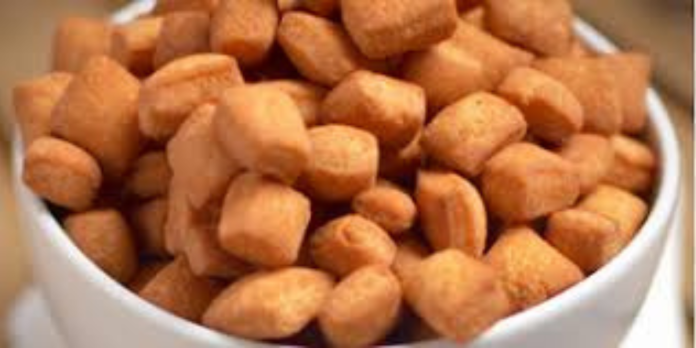Table of Contents
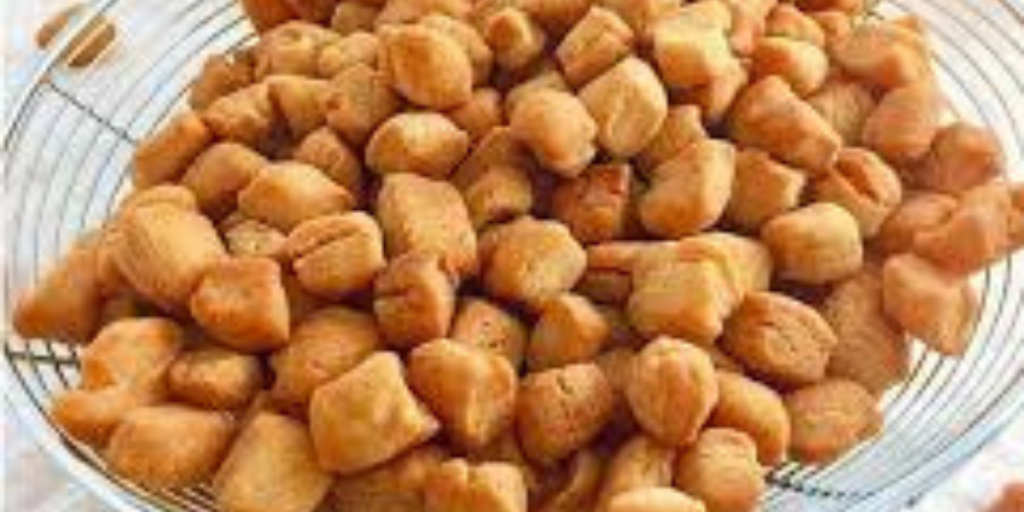
Chin chin is a beloved West African snack, known for its delightful texture and sweet taste. This deep-fried pastry can be soft and tender or crispy and crunchy, depending on how it’s made. The texture of chin chin plays a significant role in its appeal, making it a popular treat for various occasions. In this article, we’ll explore what makes chin chin soft and crunchy, delve into the science behind its texture, and provide tips and techniques to perfect your chin chin recipe.
Chin chin holds a special place in the hearts of many, particularly in Nigeria, where it is a staple at celebrations, festivals, and family gatherings. The versatility of chin chin, from its ingredients to its cooking methods, allows for endless variations, each offering a unique taste and texture experience. As we embark on this culinary journey, we’ll uncover the secrets behind achieving the perfect balance of softness and crunchiness in chin chin, ensuring that every bite is a delightful experience.
Chin Chin | Can I use yeast for chin chin? Best Of 2024
The Basics of Chinchin
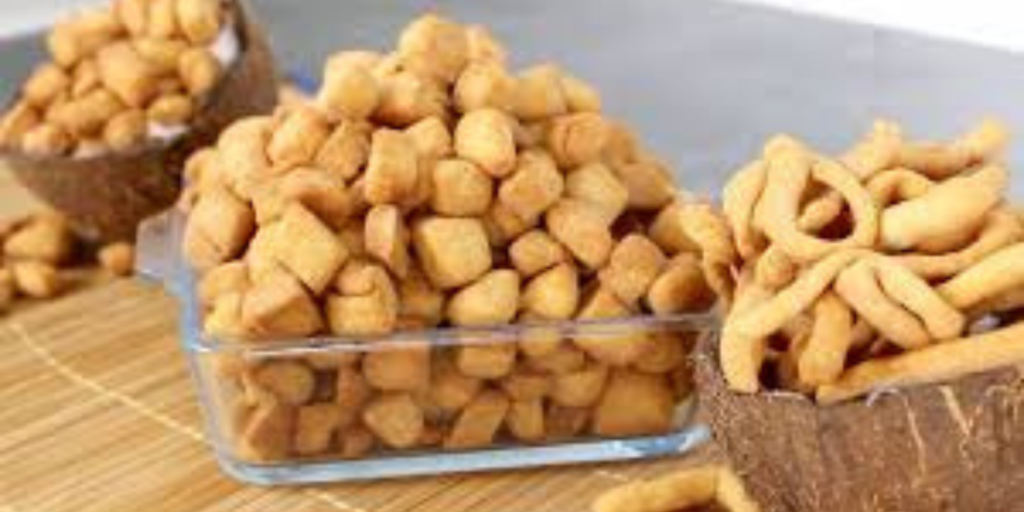
What is Chin chin?
Chinchin is a traditional snack that originates from West Africa, particularly Nigeria. It is made from dough that is flavored with sugar, butter, and milk, then deep-fried until golden brown. The dough is typically cut into small squares or strips before frying. Chinchin can be enjoyed on its own or with a variety of dips and sauces.
Historically, chinchin has been a part of African cuisine for generations, often served at celebrations, festivals, and family gatherings. It’s a versatile snack that can be customized to suit different tastes and preferences, making it a staple in many households.
Chin chin’s cultural significance extends beyond its delicious taste. It is often associated with joyous occasions and communal gatherings. During weddings, chin chin is a common treat offered to guests, symbolizing the sweetness and happiness of the occasion. During festive periods like Christmas and Easter, families come together to prepare large batches of chin chin, creating a sense of unity and shared tradition.
How to Make Chin Chin with 500g Of Flour Best of 2024
Ingredients of Chin chin
The basic ingredients for chinchin include:
- Flour: Provides the structure and base of the dough.
- Sugar: Adds sweetness and aids in browning during frying.
- Butter: Contributes to the richness and can influence the texture, making it either softer or crispier.
- Milk: Adds moisture and richness to the dough.
- Eggs (optional): Can add richness and aid in binding the dough.
- Flavorings: Common flavorings include nutmeg, vanilla extract, and lemon zest.
Flour
Flour is the backbone of any dough-based recipe, and chin chin is no exception. The type of flour used can greatly impact the final texture of the chin chin. All-purpose flour is the most commonly used flour for chin chin due to its balanced gluten content, which provides a good structure while still allowing for a tender bite.
However, experimenting with different types of flour can yield interesting results. For instance, using bread flour with a higher gluten content can result in a chewier texture, while cake flour with a lower gluten content can produce a more tender and delicate chinchin.
Sugar
Sugar not only sweetens the dough but also contributes to the texture and color of the chinchin. When the dough is fried, the sugar caramelizes, adding a beautiful golden color and a slight crunch to the exterior. The amount of sugar used can be adjusted according to personal preference, but it’s important to find a balance that enhances the flavor without overpowering it.
Butter
Butter adds richness and flavor to chinchin. It also affects the texture by shortening the gluten strands in the dough, resulting in a more tender and crumbly texture. The temperature of the butter can also influence the dough. Cold butter creates pockets of air that expand during frying, contributing to a flaky texture, while melted butter is easier to incorporate evenly into the dough.
Milk
Milk adds moisture and richness to the chinchin dough. Whole milk is typically used, but other types of milk, such as evaporated milk or buttermilk, can also be used to achieve different textures and flavors. The fat content in the milk can also influence the softness of the chin chin, with higher fat content resulting in a richer and softer dough.
Eggs
Eggs are an optional ingredient in chin chin, but they can add richness and help bind the dough together. The protein in eggs also contributes to the structure of the chin chin, making it slightly firmer. Adding eggs can make the chin chin more tender and cake-like, while omitting them results in a crisper texture.
Flavorings
Flavorings such as nutmeg, vanilla extract, and lemon zest are commonly used to enhance the taste of chinchin. Nutmeg adds a warm, spicy note, while vanilla extract adds a sweet, aromatic flavor. Lemon zest adds a fresh, citrusy touch that brightens the overall flavor profile. These flavorings can be adjusted or combined according to personal preference to create a unique chinchin recipe.
There are numerous variations of chinchin recipes, with some adding ingredients like coconut, peanuts, or chocolate chips to enhance flavor and texture. Coconut adds a subtle tropical flavor and a slightly chewy texture, while peanuts add a crunchy contrast. Chocolate chips add a sweet surprise in each bite, making chinchin even more indulgent.
The Science of Texture
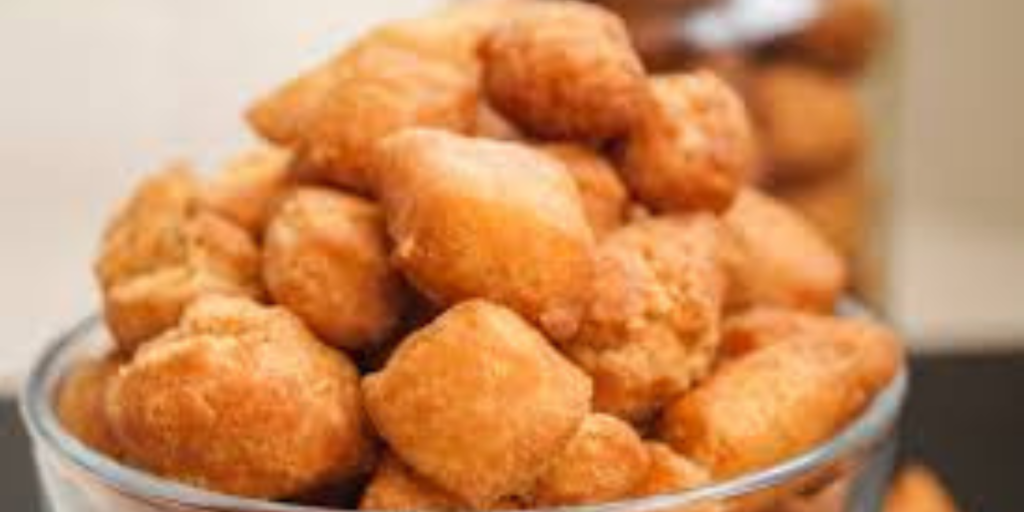
Understanding Texture
Texture in food refers to the physical feel and consistency of the food product when chewed or touched. It’s a critical aspect of the sensory experience and can greatly influence the enjoyment of a dish. For chin chin, texture can range from soft and tender to crunchy and crispy, depending on various factors such as ingredients, mixing techniques, and cooking methods.
The perception of texture is a complex sensory experience that involves the mouthfeel, the sound produced when chewing, and the overall satisfaction of eating. The right texture can enhance the flavor and overall enjoyment of the food. In chin chin, achieving the perfect texture involves a delicate balance of ingredients, preparation techniques, and cooking methods.
How Ingredients Affect Texture
Each ingredient in chinchin plays a specific role in determining its texture:
Flour
The type of flour and its gluten content can significantly impact texture. Gluten is a protein found in wheat flour that provides elasticity and structure to the dough. High-gluten flour, such as bread flour, creates a chewier texture due to its strong gluten network. On the other hand, low-gluten flour, such as cake flour, results in a softer, more tender texture.
In addition to the type of flour, the amount of flour used can also affect the texture. Too much flour can make the dough dense and dry, resulting in a hard chinchin. Conversely, too little flour can make the dough too wet and sticky, leading to a soft and greasy chin chin. It’s important to measure the flour accurately and adjust as needed based on the dough’s consistency.
Butter
The fat content in butter helps to shorten the gluten strands, resulting in a more tender and less chewy dough. The amount of butter used can also affect the crunchiness. More butter can make the chinchin richer and softer, while less butter can result in a drier, crisper texture.
The temperature of the butter is also important. Cold butter can create small pockets of air in the dough, which expand during frying and contribute to a flaky texture. Melted butter, on the other hand, is easier to incorporate evenly into the dough, resulting in a more uniform texture.
Sugar
Sugar not only sweetens the dough but also helps in caramelization during frying, contributing to a crunchy texture. The quantity of sugar can impact both sweetness and crispiness. More sugar can result in a sweeter and slightly crunchier chinchin, while less sugar can produce a milder flavor and softer texture.
Sugar also affects the moisture content of the dough. Sugar is hygroscopic, meaning it attracts and retains moisture. This can influence the overall texture of the chinchin, making it either softer or crisper depending on the amount of sugar used.
Milk
Milk adds moisture and richness. The fat content in milk can also influence the softness of the chinchin. Whole milk, with its higher fat content, can make the dough richer and softer, while low-fat or skim milk can result in a drier texture.
The moisture from the milk helps to hydrate the flour and other dry ingredients, creating a cohesive dough. The proteins and sugars in the milk also contribute to browning during frying, adding to the flavor and appearance of the chin chin.
Eggs
Eggs can add structure and moisture to the dough, making it richer and softer. The protein in eggs helps to bind the ingredients together and adds structure, resulting in a slightly firmer chinchin. Eggs also add richness and moisture, contributing to a tender and cake-like texture.
In addition to their structural and binding properties, eggs also add flavor and color to the chin chin. The fat in the yolks adds richness, while the proteins in the whites contribute to a more substantial texture.
What can I use to preserve chin chin? Nigerian Best no 1
Leavening Agents
Leavening agents, such as baking powder or baking soda, introduce air pockets into the dough, making the chin chin lighter and potentially softer. While traditional chinchin recipes do not typically include leavening agents, some variations use them to achieve a different texture.
Baking powder and baking soda react with the other ingredients in the dough to produce carbon dioxide gas, which creates air pockets and causes the dough to rise slightly during frying. This can result in a lighter, more tender chinchin with a slightly different texture compared to the traditional version.
Techniques for Achieving the Perfect Chin chin
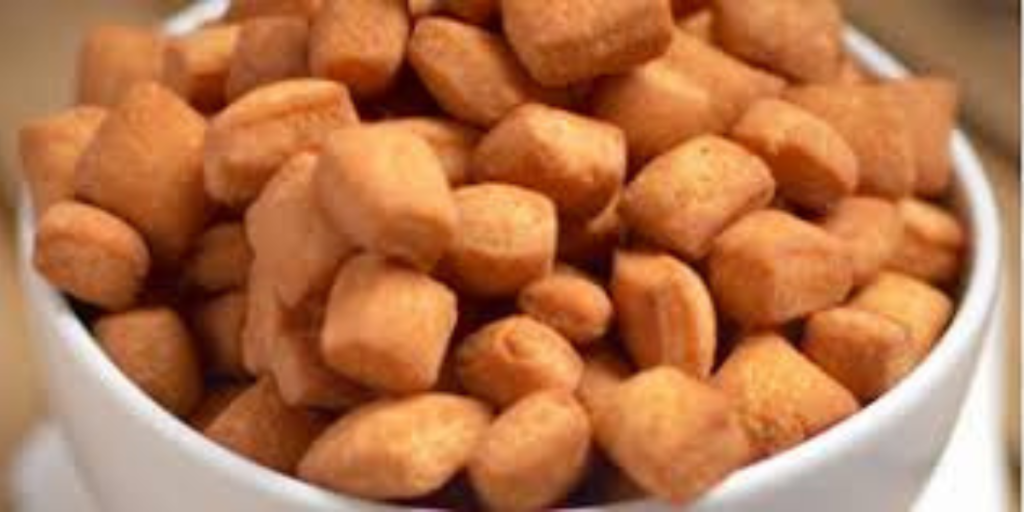
Mixing Techniques
Proper mixing is crucial to achieving the desired texture in chinchin. The way the dough is mixed can impact the final texture, making it either tender and flaky or tough and chewy.
Over-Mixing
Over-mixing the dough can lead to a tough and chewy texture as it develops more gluten. Gluten is formed when the proteins in the flour, glutenin, and gliadin, combine with water and are kneaded or mixed. While some gluten development is necessary for structure, too much can result in a dense and chewy texture.
To avoid over-mixing, mix the dough just until the ingredients are combined and form a cohesive mass. The dough should be smooth and slightly sticky but not overly wet or dry.
Under-Mixing
Under-mixing the dough can result in an uneven texture with pockets of flour or butter. This can lead to inconsistent frying and an uneven texture in the final product. It’s important to mix the dough thoroughly to ensure all the ingredients are evenly distributed.
To achieve the right consistency, mix the ingredients just until they come together to form a smooth dough. Be careful not to overwork the dough, as this can develop too much gluten and result in a tough texture.
Rolling and Cutting
The thickness of the dough affects the final texture of the chin chin. Rolling and cutting the dough to the right thickness and size are important steps in achieving the desired texture.
Thin Dough
Rolling the dough thin results in a crunchier chinchin as it fries quickly and evenly. Thin dough has less moisture and cooks faster, resulting in a crispier texture. For a crunchy chinchin, roll the dough to about 1/4 inch thickness.
Thick Dough
Thicker dough yields a softer inside with a crispy exterior. The thicker the dough, the more moisture it retains, resulting in a tender interior and a crisp exterior. For a softer chin chin, roll the dough to about 1/2 inch thickness.
Use a rolling pin to evenly roll out the dough to your preferred thickness. It’s important to roll the dough evenly to ensure consistent frying and texture. Cut the dough into uniform pieces, such as squares or strips, to ensure even cooking.
Frying Techniques
Frying is where the texture of chin chin is ultimately determined. The frying process is critical to achieving the desired balance between softness and crunchiness.
Frying Temperature
Maintaining the right temperature is key to achieving the perfect texture. The ideal frying temperature for chin chin is between 350°F and 375°F (175°C to 190°C). Frying at this temperature ensures that the chinchin cooks evenly and develops a golden-brown exterior while remaining tender inside.
- Too High Temperature: If the oil is too hot, the chinchin will brown too quickly on the outside while remaining raw inside. This can result in a burnt exterior and an undercooked interior.
- Too Low Temperature: If the oil is not hot enough, the chinchin will absorb too much oil and become greasy and heavy. This can result in a soft and greasy texture.
To maintain the right temperature, use a deep-fry thermometer to monitor the oil. Fry the chinchin in small batches to avoid overcrowding the pan, which can lower the oil temperature and result in uneven cooking.
Oil Type
Using the right type of oil is important for achieving consistent frying results. Choose an oil with a high smoke point, such as vegetable oil, canola oil, or peanut oil. These oils can withstand high frying temperatures without breaking down or imparting off-flavors.
Avoid using oils with low smoke points, such as olive oil or butter, as they can burn at high temperatures and affect the flavor and texture of the chin chin.
Tips for Perfecting Chin chin
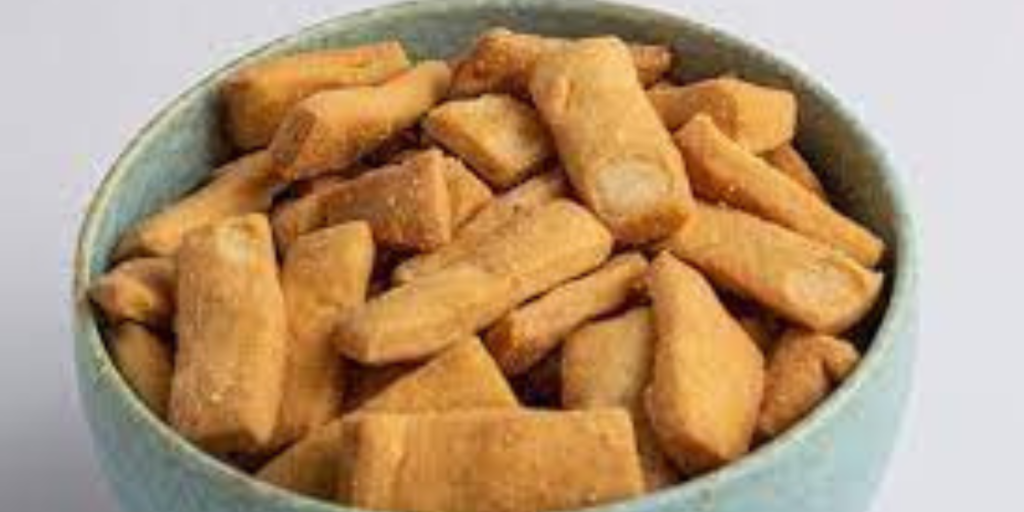
Ingredient Quality
Using high-quality ingredients can greatly impact the texture and flavor of chin chin. Fresh, high-quality ingredients ensure the best structure and taste.
Fresh Flour
Using fresh flour ensures the best structure and flavor. Old or stale flour can develop off-flavors and affect the texture of the dough. Store flour in a cool, dry place and use it within its expiration date for the best results.
Real Butter
Using real butter adds richness and a better mouthfeel to the chin chin. Margarine or other butter substitutes can result in a different texture and flavor. Choose high-quality, unsalted butter for the best results.
Whole Milk
Using whole milk provides a creamier texture and richer flavor. The fat content in whole milk adds moisture and richness to the dough. If you prefer a lighter texture, you can use low-fat or skim milk, but the flavor and richness may be slightly different.
Recipe Variations
Experimenting with different recipes can help you find the perfect texture and flavor for your chinchin. Here are some variations to try:
Adding Coconut
Coconut adds a subtle tropical flavor and a slightly chewy texture to chin chin. You can add grated coconut or coconut flakes to the dough for a unique twist. Toasting the coconut before adding it to the dough can enhance its flavor and add a crunchy texture.
Using Honey
Using honey instead of sugar can result in a softer, chewier texture. Honey is hygroscopic, meaning it attracts and retains moisture, which can make the dough more tender. Replace the sugar with an equal amount of honey and adjust the liquid content as needed to achieve the right dough consistency.
Incorporating Nuts
Incorporating nuts, such as peanuts or almonds, can add a crunchy contrast to the soft dough. Finely chop the nuts and mix them into the dough for added texture and flavor. Toasting the nuts before adding them to the dough can enhance their flavor and add an extra layer of crunch.
Storage Tips
Proper storage is essential to maintaining the texture and freshness of chinchin. Here are some tips for storing chinchin:
Airtight Containers
Store chinchin in airtight containers to keep it fresh and crunchy. Airtight containers prevent moisture from getting in and softening the chin chin. You can also use resealable plastic bags or vacuum-sealed bags for storage.
Cool, Dry Place
Store chin chin in a cool, dry place to prevent moisture from affecting its texture. Avoid storing chin chin in the refrigerator, as the cold temperature can cause it to become stale and lose its crunchiness. Instead, store it at room temperature in a cool, dry pantry or cupboard.
Reheating
If your chinchin becomes soft, you can reheat it in a low oven to refresh its crunchiness. Preheat the oven to 250°F (120°C) and spread the chinchin on a baking sheet in a single layer. Bake for 5-10 minutes, or until the chinchin is heated through and crispy.
Troubleshooting Common Issues
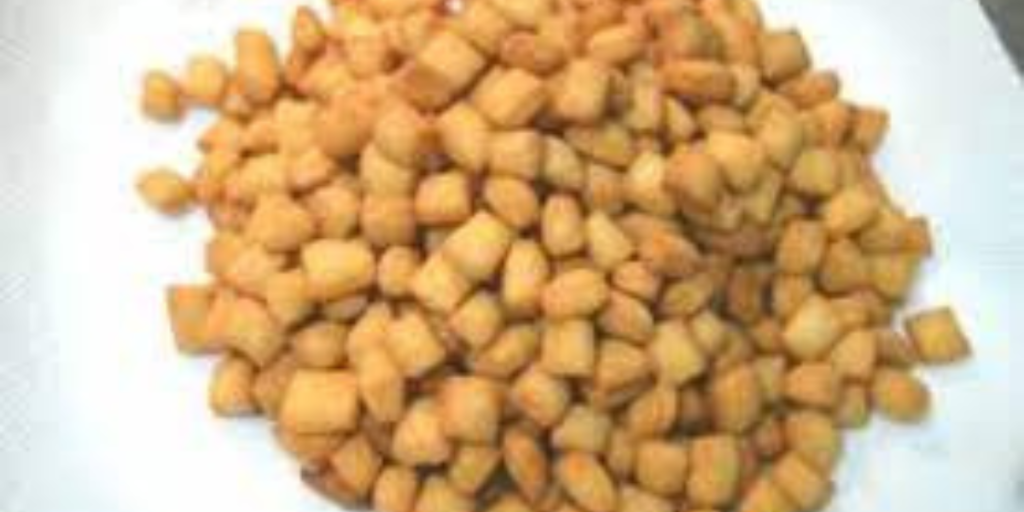
Soft Chinchin
If your chinchin turns out too soft, consider these factors:
Oil Temperature
Ensure the oil is hot enough for frying. The ideal frying temperature for chinchin is between 350°F and 375°F (175°C to 190°C). If the oil is not hot enough, the chinchin will absorb too much oil and become greasy and soft.
Dough Thickness
Roll the dough thinner for a crunchier texture. Thin dough fries faster and becomes crispier, while thick dough retains more moisture and remains softer inside.
Sugar Content
Increase the sugar slightly for better caramelization. Sugar helps to create a crunchy exterior by caramelizing during frying. Adding a bit more sugar to the dough can enhance the crispiness.
Chin Chin :What Are The Best Health Benefits In 2024
Hard or Overly Crunchy Chinchin
For chinchin that is too hard or crunchy, consider these factors:
Mixing
Avoid over-mixing the dough. Over-mixing develops too much gluten, resulting in a tough texture. Mix the dough just until the ingredients come together to form a smooth dough.
Butter Amount
Increase the butter for a softer texture. Butter adds richness and tenderness to the dough. Adding a bit more butter can help to soften the texture and make the chinchin less hard.
Cooking Time
Reduce frying time to prevent over-crisping. Fry the chinchin until it is golden brown and cooked through, but not too long that it becomes overly crunchy. Monitor the frying process closely to achieve the desired texture.
Frequently Asked Questions (FAQ)
What can I do if my chinchin is too soft?
If your chinchin is too soft, you can try frying it again briefly at a higher temperature to achieve a crunchier exterior. Heat the oil to the correct frying temperature (350°F to 375°F) and fry the chinchin for a few more minutes until it becomes crispy.
How can I make my chinchin crunchier without changing the recipe?
To make your chinchin crunchier without changing the recipe, ensure the oil is at the correct temperature and fry in small batches. Rolling the dough thinner can also help achieve a crunchier texture. Additionally, you can increase the sugar slightly for better caramelization.
Can I use different types of flour for chinchin?
Yes, you can use different types of flour for chinchin, but be aware that different flours will affect the texture. For example, using bread flour with a higher gluten content can result in a chewier texture, while using cake flour with a lower gluten content can produce a more tender and delicate chinchin.
How can I ensure consistent texture in every batch?
To ensure consistent texture in every batch, measure ingredients accurately, maintain a consistent dough thickness, and monitor frying temperatures closely. Using a kitchen scale to measure ingredients can help achieve accuracy. Rolling the dough evenly and frying in small batches can also ensure consistent cooking and texture.
How To Make Fluffy Moi MOi .Nigerian Best in 2024
What are some common mistakes to avoid when making chinchin?
Avoid these common mistakes when making chinchin:
- Over-mixing the dough: Over-mixing develops too much gluten and results in a tough texture. Mix the dough just until the ingredients come together.
- Incorrect oil temperature: Frying at too high or too low a temperature can result in uneven cooking and texture. Use a deep-fry thermometer to monitor the oil temperature.
- Overcrowding the frying pan: Frying too many pieces at once can lower the oil temperature and result in greasy, unevenly cooked chinchin. Fry in small batches to maintain the right temperature.
- Inaccurate measurements: Measuring ingredients inaccurately can affect the dough’s consistency and texture. Use a kitchen scale for precise measurements.
Exploring Cultural Variations of Chinchin
Nigerian Chinchin
In Nigeria, chinchin is a popular snack enjoyed by people of all ages. It is often served at celebrations, such as weddings, birthdays, and festivals. Nigerian chinchin is typically made with flour, sugar, butter, and milk, and flavored with nutmeg or vanilla extract. It is rolled out thin, cut into small squares or strips, and deep-fried until golden brown.
Nigerian chinchin is known for its crispiness and sweet flavor. It is often enjoyed on its own as a snack or paired with a cup of tea or coffee. During festive periods like Christmas and Easter, large batches of chinchin are prepared and shared with family and friends, creating a sense of community and tradition.
Ghanaian Chinchinga
In Ghana, a similar snack called “chinchinga” is enjoyed. Chinchinga is made with similar ingredients as Nigerian chinchin but is often flavored with additional spices, such as ginger or cloves, to add a unique twist. Chinchinga is typically rolled out thin and cut into long strips before frying.
Ghanaian chinchinga is known for its slightly spicy and aromatic flavor. The addition of spices gives it a distinctive taste that sets it apart from other variations of chinchin. It is often enjoyed as a snack or appetizer and is commonly found at street food stalls and markets.
Cameroonian Croquettes
In Cameroon, a similar snack called “croquettes” is popular. Cameroonian croquettes are made with a dough that includes flour, sugar, butter, and milk, similar to chinchin. However, the dough is often flavored with coconut or ground peanuts, giving it a unique taste and texture.
Cameroonian croquettes are typically rolled out thick and cut into small, round shapes before frying. They have a slightly chewy texture and a rich, nutty flavor. Croquettes are often enjoyed during festive occasions and celebrations, where they are served alongside other traditional snacks and dishes.
Senegalese Fattaya
In Senegal, a similar snack called “fattaya” is enjoyed. Fattaya is made with a dough that includes flour, sugar, butter, and milk, similar to chinchin. However, the dough is often flavored with coconut or ground peanuts, giving it a unique taste and texture.
Senegalese fattaya is typically rolled out thick and cut into small, round shapes before frying. They have a slightly chewy texture and a rich, nutty flavor. Fattaya is often enjoyed during festive occasions and celebrations, where they are served alongside other traditional snacks and dishes.
Exploring Global Variations
Chinchin-like snacks can be found in various cultures around the world, each with its unique twist on the recipe. In Italy, “chiacchiere” are thin, crispy pastries dusted with powdered sugar, traditionally enjoyed during Carnival. In the Philippines, “shakoy” or “lubid-lubid” are twisted doughnuts that are deep-fried until golden brown and coated in sugar. In Latin America, “buñuelos” are deep-fried dough balls often flavored with anise and served with syrup or honey.
Exploring these global variations of chinchin can provide inspiration for creating your unique version. By experimenting with different ingredients, flavorings, and techniques, you can create a chinchin recipe that reflects your personal taste and culinary preferences.
Chinchin for Special Diets
Gluten-Free Chinchin
For those with gluten intolerance or celiac disease, gluten-free chinchin can be made using alternative flours, such as rice flour, almond flour, or a gluten-free flour blend. The texture may vary slightly, but the resulting chinchin can still be delicious and enjoyable.
Ingredients:
- 2 cups gluten-free flour blend
- 1/2 cup sugar
- 1/4 cup butter (or dairy-free alternative)
- 1/4 cup milk (or dairy-free alternative)
- 1 egg (or flax egg for vegan option)
- 1/2 teaspoon nutmeg (optional)
- 1 teaspoon vanilla extract
Instructions:
- In a large bowl, combine the gluten-free flour blend, sugar, and nutmeg (if using).
- Cut in the butter until the mixture resembles coarse crumbs.
- In a separate bowl, whisk together the milk, egg, and vanilla extract.
- Add the wet ingredients to the dry ingredients and mix until a smooth dough forms.
- Roll out the dough to your desired thickness and cut into small squares or strips.
- Heat oil in a deep fryer or large pot to 350°F (175°C).
- Fry the chinchin in small batches until golden brown and crispy.
- Remove from the oil and drain on paper towels. Allow to cool before serving.
Vegan Chinchin
For a vegan version of chinchin, substitute dairy ingredients with plant-based alternatives. Use almond milk, coconut milk, or soy milk in place of dairy milk, and use coconut oil or margarine instead of butter. For egg replacement, use a flax egg or applesauce.
Ingredients:
- 2 cups all-purpose flour
- 1/2 cup sugar
- 1/4 cup coconut oil or margarine
- 1/4 cup almond milk (or other plant-based milk)
- 1 flax egg (1 tablespoon ground flaxseed mixed with 3 tablespoons water)
- 1/2 teaspoon nutmeg (optional)
- 1 teaspoon vanilla extract
Instructions:
- In a large bowl, combine the flour, sugar, and nutmeg (if using).
- Cut in the coconut oil or margarine until the mixture resembles coarse crumbs.
- In a separate bowl, whisk together the almond milk, flax egg, and vanilla extract.
- Add the wet ingredients to the dry ingredients and mix until a smooth dough forms.
- Roll out the dough to your desired thickness and cut into small squares or strips.
- Heat oil in a deep fryer or large pot to 350°F (175°C).
- Fry the chinchin in small batches until golden brown and crispy.
- Remove from the oil and drain on paper towels. Allow to cool before serving.
Low-Sugar Chinchin
For those looking to reduce sugar intake, a low-sugar chinchin recipe can be made by reducing the amount of sugar or using natural sweeteners, such as stevia or monk fruit sweetener. The texture may be slightly different, but the chinchin will still be enjoyable.
Ingredients:
- 2 cups all-purpose flour
- 1/4 cup sugar or natural sweetener equivalent
- 1/4 cup butter (or dairy-free alternative)
- 1/4 cup milk (or dairy-free alternative)
- 1 egg (or flax egg for vegan option)
- 1/2 teaspoon nutmeg (optional)
- 1 teaspoon vanilla extract
Instructions:
- In a large bowl, combine the flour, sugar (or natural sweetener), and nutmeg (if using).
- Cut in the butter until the mixture resembles coarse crumbs.
- In a separate bowl, whisk together the milk, egg, and vanilla extract.
- Add the wet ingredients to the dry ingredients and mix until a smooth dough forms.
- Roll out the dough to your desired thickness and cut into small squares or strips.
- Heat oil in a deep fryer or large pot to 350°F (175°C).
- Fry the chinchin in small batches until golden brown and crispy.
- Remove from the oil and drain on paper towels. Allow to cool before serving.
Conclusion
Achieving the perfect balance of softness and crunchiness in chinchin requires an understanding of the ingredients, techniques, and science behind its texture. By experimenting with different recipes, ingredients, and cooking methods, you can create a chinchin that suits your personal taste and preferences. Whether you prefer a soft and tender texture or a crispy and crunchy bite, the tips and techniques outlined in this article will help you perfect your chinchin-making skills. Enjoy the process and savor the delicious results!
















